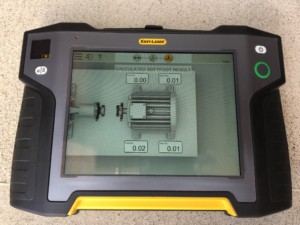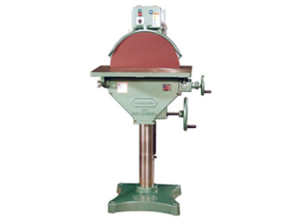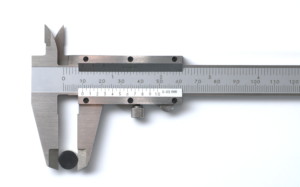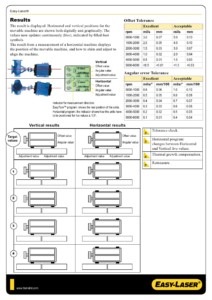
How you lead and support maintenance and reliability improvements may cause it’s failure
Have you ever wondered what some leaders and ghosts have in common? Well, I will get to that, but let me paint you a picture. You have been told to start improving the storeroom, so you start by analyzing the performance, identify gaps and finally develop a plan to make the improvement. You share this improvement plan and business case with the senior leadership of the site. You get a resounding “Let’s do it” across the room. You leave super excited to start the improvement journey. As you start implementing the improvements, you run up against multiple barriers, such as finance not willing to write off obsolete parts or sell them back to the supplier for a discount. The storeroom staff “don’t have time” to assist with the cleanup or the data analysis. Since the storeroom doesn’t directly report to you, you talk to their manager, and the manager says their staff are too busy. You go to discuss the barriers with the project sponsor and leadership team, and they are still behind the project. Yet, they don’t go out and talk to the staff, nor do you hear about the project anywhere in the facility. So where are these leaders? They are a ghost to the project. [Read more…]



 Imagine (or maybe you don’t have to) that you take out your brand new Easy-Laser system, and proceed to perform a shaft alignment. However, it seems that no matter what you do, you can’t get a great alignment. What is going on? The foundation looks good, new shims were used, the asset is clean, and there is no pipe strain. After some discussion with others, they mention a term in which you are unfamiliar with, soft foot.
Imagine (or maybe you don’t have to) that you take out your brand new Easy-Laser system, and proceed to perform a shaft alignment. However, it seems that no matter what you do, you can’t get a great alignment. What is going on? The foundation looks good, new shims were used, the asset is clean, and there is no pipe strain. After some discussion with others, they mention a term in which you are unfamiliar with, soft foot. As an Enterprise Maintenance Planner, you manage the backlog, provide a maintenance schedule, liaise with Maintenance and Operations, maintain excellent knowledge of the facility and its equipment, and find ways to optimize productivity. Phew! That’s no small to-do list.
As an Enterprise Maintenance Planner, you manage the backlog, provide a maintenance schedule, liaise with Maintenance and Operations, maintain excellent knowledge of the facility and its equipment, and find ways to optimize productivity. Phew! That’s no small to-do list. When you hear the work assessment or audit, does it send shivers down your spine? Do you envision a week or two of some “expert” digging through your data, processes, and performance, looking to get you in trouble for something you did or didn’t do?
When you hear the work assessment or audit, does it send shivers down your spine? Do you envision a week or two of some “expert” digging through your data, processes, and performance, looking to get you in trouble for something you did or didn’t do? An assessment was performed and many opportunities identified, but it has been three months, and nothing has changed. Does this sound familiar? As discussed in a previous post, the goal of an assessment is to identify gap to best practices and provide the basis to develop a plan to move forward. However, many times an assessment is performed, the results put into a binder and put on the shelf (does this sound like your RCM initiative?).
An assessment was performed and many opportunities identified, but it has been three months, and nothing has changed. Does this sound familiar? As discussed in a previous post, the goal of an assessment is to identify gap to best practices and provide the basis to develop a plan to move forward. However, many times an assessment is performed, the results put into a binder and put on the shelf (does this sound like your RCM initiative?).
 Why is it that some individuals perform a PM Routine and always find something and others don’t? And why is that when some individuals perform a rebuild or overhaul, the equipment struggles to start and return to steady state? The answer comes down to how detailed the individuals are during the maintenance activity. But how can this be overcome with such a wide range of individuals in the maintenance team? The answer is precision maintenance
Why is it that some individuals perform a PM Routine and always find something and others don’t? And why is that when some individuals perform a rebuild or overhaul, the equipment struggles to start and return to steady state? The answer comes down to how detailed the individuals are during the maintenance activity. But how can this be overcome with such a wide range of individuals in the maintenance team? The answer is precision maintenance Imagine being able to look back and see what settings the equipment was last ran at for a particular SKU. Or being able to look back at the last three alignment inspections and see that slowly the alignment is drifting. What could you do with this type of information? You could perform Root Cause Analysis to see why the alignment is drifting, or trend the drifting to know when it will be out of acceptable tolerances.
Imagine being able to look back and see what settings the equipment was last ran at for a particular SKU. Or being able to look back at the last three alignment inspections and see that slowly the alignment is drifting. What could you do with this type of information? You could perform Root Cause Analysis to see why the alignment is drifting, or trend the drifting to know when it will be out of acceptable tolerances. As a maintenance professional, you spend a lot of time explaining how a proper maintenance & reliability program will improve uptime, safety, etc. But why is it that there is a hard time gaining support for the improvement initiatives? Well, senior executives are focused on how the company is being a measure of performance from the shareholders, financial analysts, or owners. Most of these measures are financial in nature, and while there are others, the primary measures are financial.
As a maintenance professional, you spend a lot of time explaining how a proper maintenance & reliability program will improve uptime, safety, etc. But why is it that there is a hard time gaining support for the improvement initiatives? Well, senior executives are focused on how the company is being a measure of performance from the shareholders, financial analysts, or owners. Most of these measures are financial in nature, and while there are others, the primary measures are financial.  There is not a single maintenance department that I am aware of that has an unlimited budget. If you are aware of one, please let me know as I would love to see if it is successful or not.
There is not a single maintenance department that I am aware of that has an unlimited budget. If you are aware of one, please let me know as I would love to see if it is successful or not.
 Let’s face it, we as engineers, maintenance staff, etc. all love technology and the newest gadget. Our industry is never short of these new and shiny techniques, tools, sensors, etc. Now, this new tech can lead to significant improvements in availability, OEE, or uptime. But these are not the silver bullets many claim them to be… especially if the foundational elements are not in place.
Let’s face it, we as engineers, maintenance staff, etc. all love technology and the newest gadget. Our industry is never short of these new and shiny techniques, tools, sensors, etc. Now, this new tech can lead to significant improvements in availability, OEE, or uptime. But these are not the silver bullets many claim them to be… especially if the foundational elements are not in place.